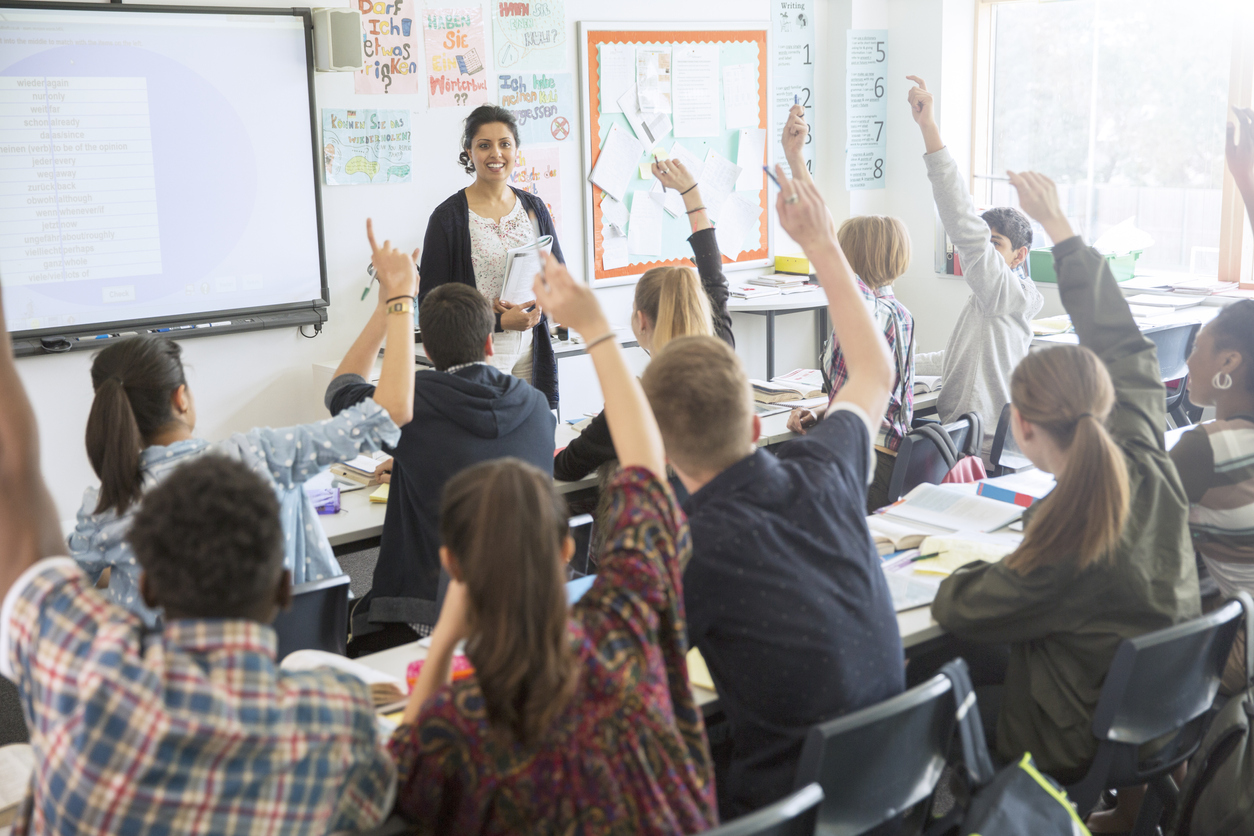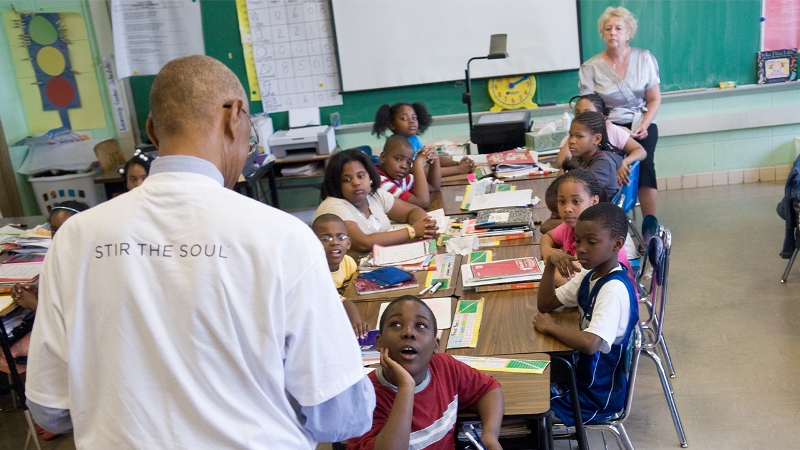A Comprehensive Overview to the Different Learning Methods in Primary Scientific Research Direction
The expedition of varied learning techniques in main science guideline provides a chance for teachers to enhance trainee engagement and comprehension significantly. By checking out hands-on knowing techniques, inquiry-based techniques, and collective strategies, we can determine efficient techniques that provide to numerous finding out designs.

Hands-On Knowing Methods
Hands-on discovering strategies play a pivotal role in key science instruction, engaging students in active exploration and experimentation. These techniques enable learners to engage straight with materials and sensations, cultivating a much deeper understanding of scientific principles. By utilizing manipulatives, versions, and real-life experiments, educators create an environment where students can observe, hypothesize, and test their ideas.
Such strategies not just boost understanding however also cultivate vital thinking and problem-solving skills. When pupils join tasks like developing easy devices, growing seeds, or performing chain reactions, they are motivated to ask questions and seek solutions with their own monitorings. This experiential technique helps to debunk intricate clinical concepts, making them a lot more relatable and obtainable.
Additionally, hands-on discovering advertises collaboration amongst peers, as students often function in groups to conduct experiments or share findings. This synergy not just enriches their understanding experience however also establishes important social abilities. Eventually, incorporating hands-on techniques in main science direction fosters a lifelong love of understanding and interest concerning the environment, laying a strong foundation for future scholastic pursuits in science and past.
Inquiry-Based Learning
Inquiry-based discovering is an instructional method that encourages trainees to ask inquiries, investigate phenomena, and create their very own understanding of clinical ideas. This method moves the emphasis from traditional teacher-led instruction to a much more student-centered experience, where students take the campaign in their educational journey. By fostering interest, inquiry-based understanding promotes deeper engagement with the material, enabling trainees to discover subjects in a meaningful context.
In method, this technique often involves hands-on experiments, observations, and important reasoning tasks that line up very closely with the clinical method. Students are encouraged to formulate hypotheses, design investigations, and evaluate data, which cultivates necessary abilities such as analytic and analytical thinking. The duty of the educator in this structure is to facilitate exploration, assisting trainees with the inquiry process while encouraging independent idea and cooperation.
Moreover, inquiry-based learning nurtures a feeling of possession over the discovering process, motivating pupils to seek understanding actively. This method not only enhances understanding of clinical ideas but additionally cultivates a lifelong love for knowing, equipping pupils with the abilities essential to navigate a progressively complicated globe.
Collaborative Understanding Approaches
Collaborative discovering strategies empower trainees to participate in meaningful interactions with peers, promoting a common responsibility for their academic results. In key scientific research instruction, these techniques urge students to interact to discover clinical concepts, resolve issues, and carry out experiments (primary science tuition Singapore). By joining group activities, students can take advantage of diverse viewpoints, enabling richer understanding and retention of scientific expertise
One trick aspect of collaborative learning is the emphasis on communication skills. Students have to articulate their thoughts, listen actively to others, and discuss concepts, every one of which are critical competencies in both real-world and academic contexts. This social communication not only improves their understanding of scientific principles however likewise promotes teamwork and conflict resolution skills.
Furthermore, joint knowing typically brings about increased motivation Your Domain Name and engagement. They are extra most likely to take possession of their understanding trip when pupils see the worth of their payments within a group. Teachers can promote this procedure deliberately structured group jobs that straighten with my latest blog post educational program objectives while giving guidance on efficient partnership strategies. Overall, integrating collaborative knowing strategies in key science instruction grows a dynamic understanding environment that prepares pupils for future academic and social difficulties.
Innovation Integration in Science
The assimilation of innovation in main scientific research guideline enhances discovering experiences by supplying innovative tools and resources that support various teaching approaches, including joint learning - primary science tuition Singapore. The use of digital platforms, simulations, and interactive applications permits pupils to involve deeply with clinical principles, helping with a much more hands-on technique to understanding
Virtual laboratories, as an example, allow learners to conduct experiments safely and efficiently, promoting inquiry-based learning. These devices can imitate real-world clinical circumstances, permitting pupils to picture complicated procedures that would be challenging to replicate in a traditional class setting. Innovation fosters interaction and cooperation among students, as they can share searchings for and function together on projects via on the internet platforms.
In addition, multimedia presentations and educational video clips can enhance lessons by accommodating varied knowing designs, making abstract ideas a lot more obtainable. Information analysis devices also encourage students to accumulate and interpret clinical data, enhancing essential thinking skills. On the whole, the calculated consolidation of modern technology in main scientific research direction not just boosts engagement yet also prepares trainees for a technologically sophisticated see post culture, equipping them with crucial skills for future scientific undertakings.
Differentiated Direction Approaches
Distinguished guideline strategies are vital for resolving the diverse needs of learners in key scientific research education. These techniques allow instructors to customize their teaching methods to fit differing capacities, passions, and learning designs within the class. By employing distinguished direction, instructors can produce a comprehensive setting that cultivates involvement and boosts understanding of clinical principles.
One reliable strategy is to use adaptable organizing, which allows pupils to team up with peers at comparable ability degrees or with differing perspectives. This approach encourages peer knowing and promotes crucial thinking. Additionally, providing options in projects can empower pupils, permitting them to choose jobs that resonate with their passions while still fulfilling curricular goals.
Furthermore, integrating tiered projects is another valuable strategy. By creating tasks with differing degrees of complexity, instructors can make sure that all trainees are appropriately challenged, no matter their proficiency. Making use of developmental assessments to evaluate understanding more enables instructors to readjust their educational techniques dynamically, making sure that each learner obtains the assistance they need.
Eventually, executing separated direction strategies in main science education not just enhances pupil knowing end results yet also grows a passion for science, preparing pupils for future academic quests.

Verdict
In summary, effective primary science direction requires a diverse strategy that incorporates hands-on learning, inquiry-based methods, and collective strategies. The assimilation of modern technology and differentiated instruction further caters to varied learning designs, cultivating a setting helpful to expedition and essential reasoning.
The expedition of diverse discovering approaches in key scientific research guideline provides a chance for teachers to enhance student involvement and understanding dramatically.Hands-on understanding strategies play an essential function in primary scientific research guideline, engaging students in active expedition and testing.Inquiry-based knowing is an instructional method that encourages pupils to ask concerns, examine sensations, and build their own understanding of clinical ideas.Collaborative understanding techniques equip students to involve in significant communications with peers, fostering a common responsibility for their instructional end results. Overall, integrating collaborative learning techniques in main scientific research instruction grows a dynamic discovering environment that prepares trainees for future scholastic and social difficulties.